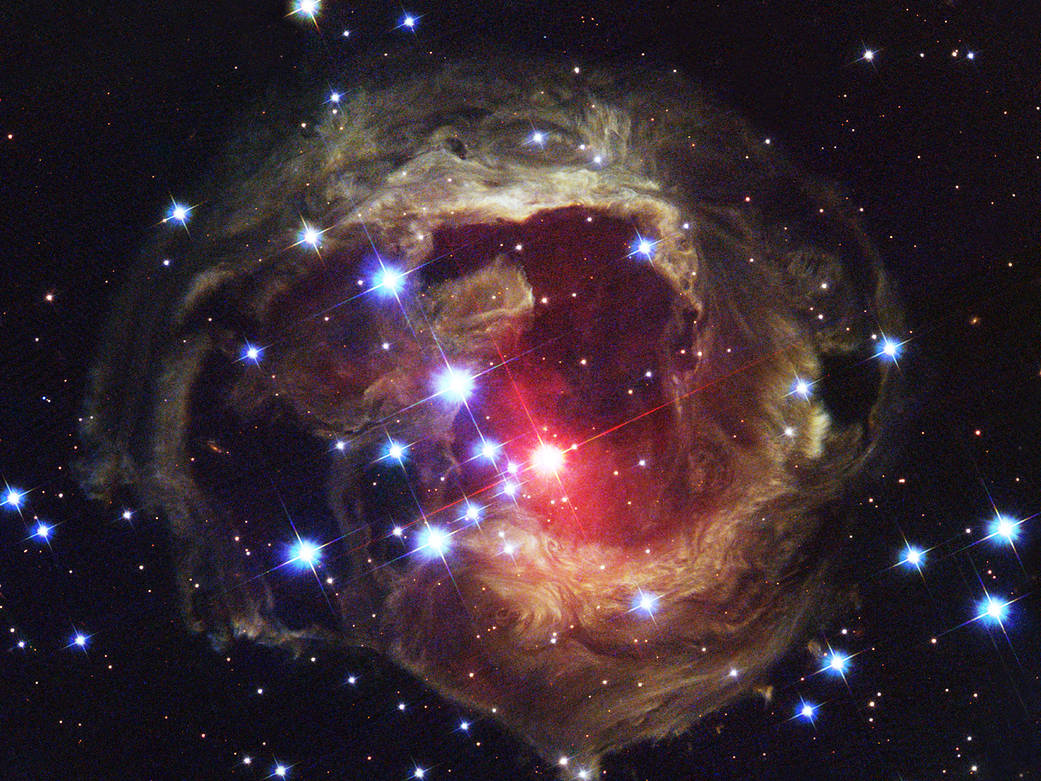
The Hubble Space Telescope’s latest image of the star V838 Monocerotis (V838 Mon) reveals dramatic changes in the illumination of surrounding dusty cloud structures. The effect, called a light echo, has been unveiling never-before-seen dust patterns ever since the star suddenly brightened for several weeks in early 2002.
The illumination of interstellar dust comes from the red supergiant star at the middle of the image, which gave off a pulse of light three years ago, somewhat similar to setting off a flashbulb in a darkened room. The dust may have been ejected during a previous explosion, similar to the 2002 event.
The echoing of light through space is similar to the echoing of sound through air. As light from the explosion continues to move outwards, different parts of the dust are illuminated, just as a sound echo bounces off of objects near the source, and later, objects further from the source.Image Credit: NASA




























